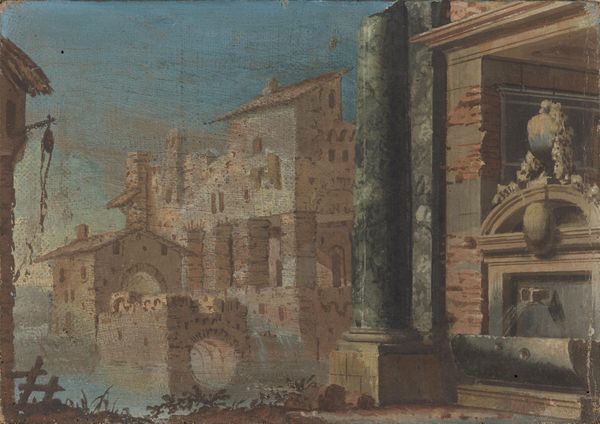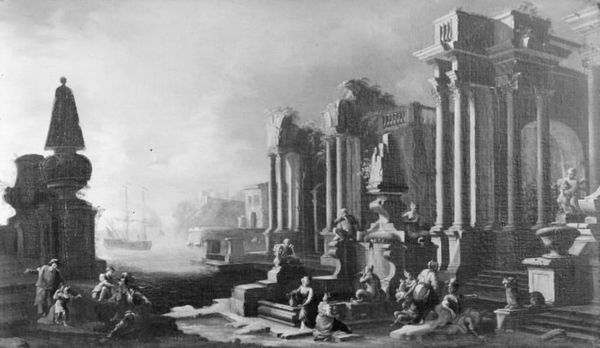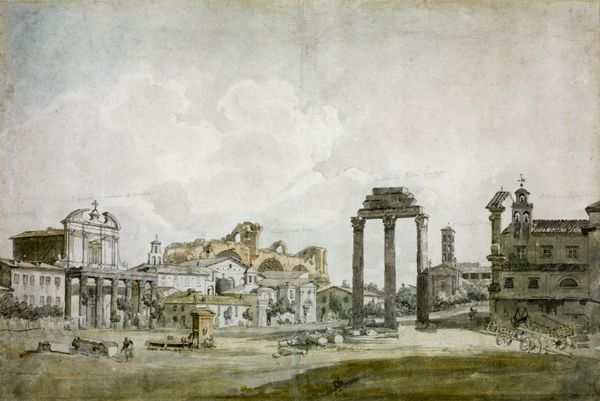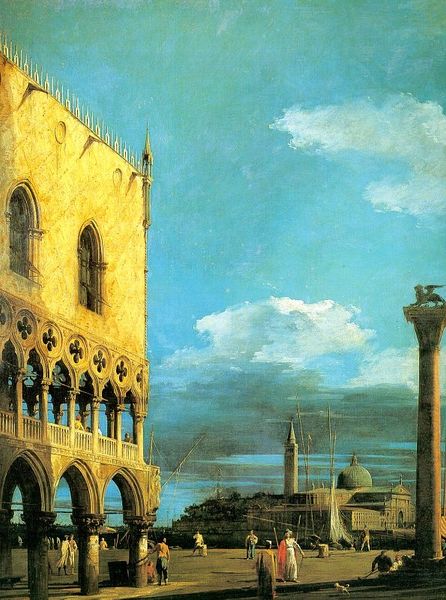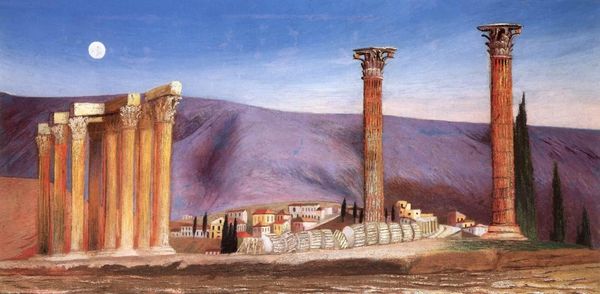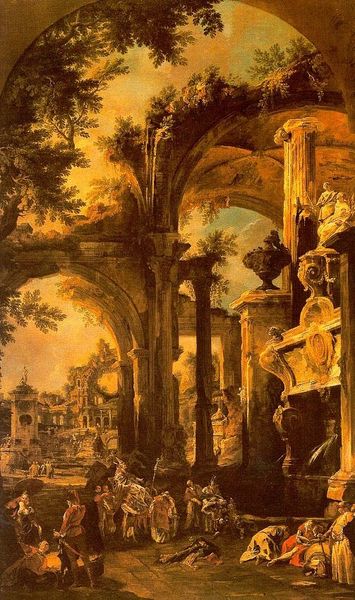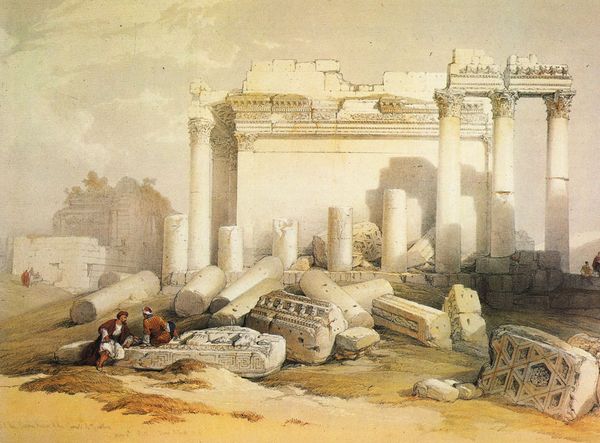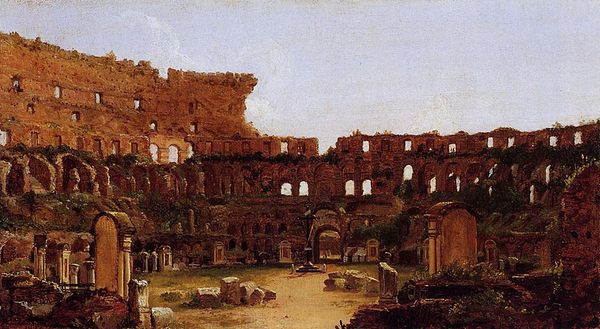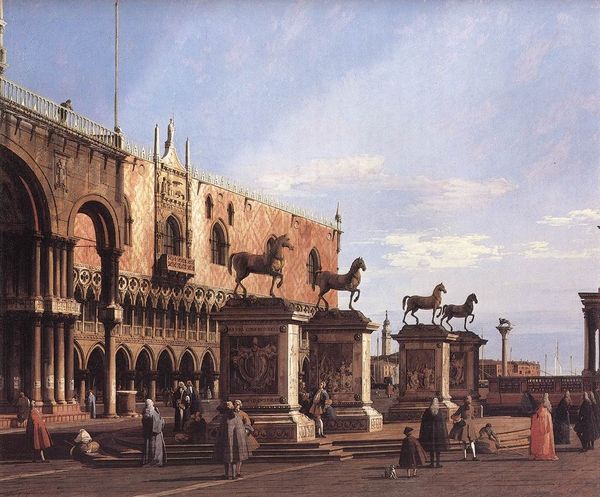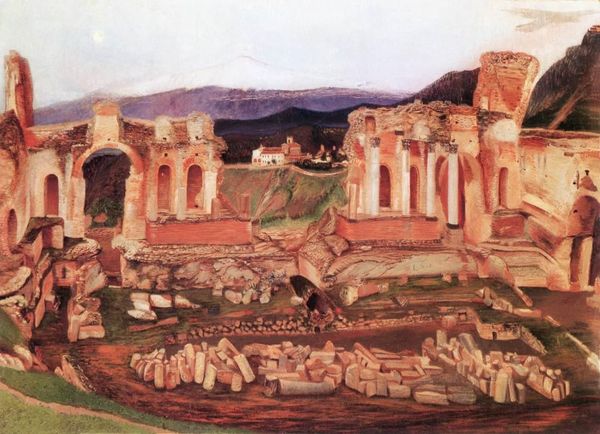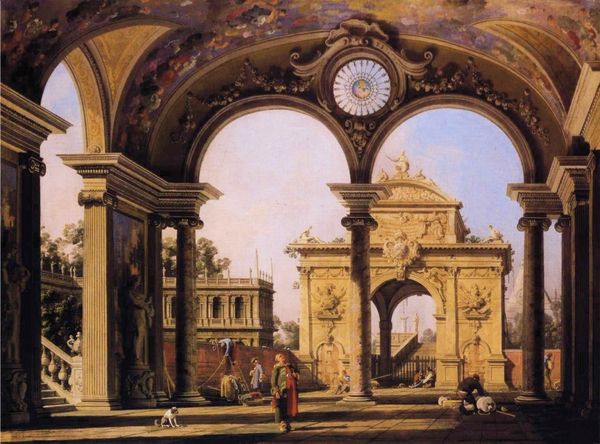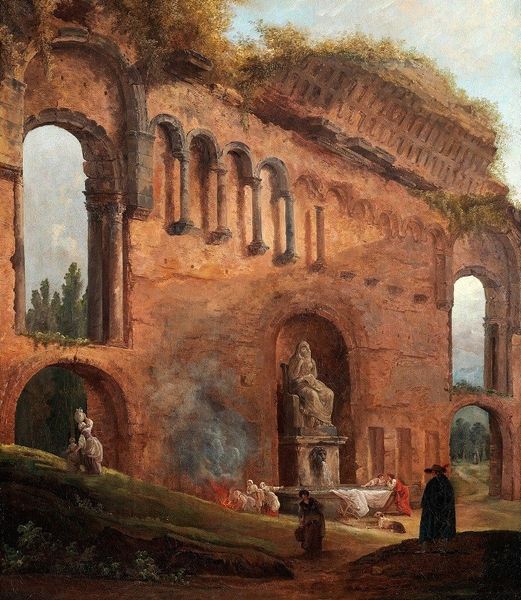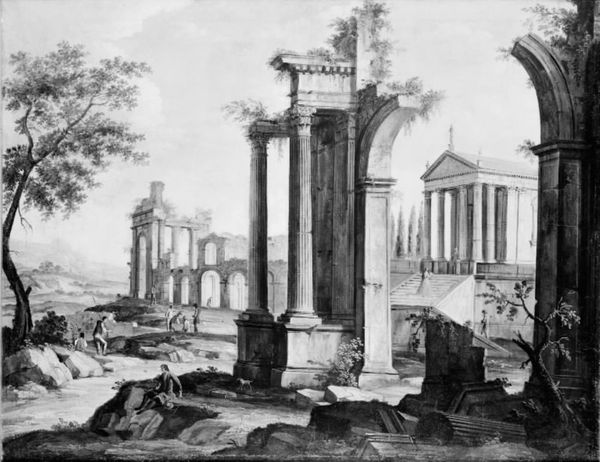
Copyright: Public domain
Editor: Here we have Tivadar Kosztka Csontvary's "Pompeji Have (House of the Chirurgus with the Vesuv)," painted in 1898 with oil paint. The ruined city gives a somewhat melancholic impression, like a memory fading into time. What symbols and historical understanding can you offer us in viewing this artwork? Curator: The crumbling columns and the looming Vesuvius connect to something deeper, evoking not just a scene but the ephemerality of civilizations and human endeavor. The mountain isn’t merely a backdrop, it's a silent witness, a godlike figure looming over human fragility. Csontvary seems interested in the psychological weight of history. What do you observe about how the geometric structure relates to that fragility? Editor: I noticed how the columns are rigid and upright even though the city around them has decayed. Maybe it is hinting that certain elements of a culture can persevere even through massive destruction? Curator: Exactly! It evokes the persistence of cultural memory, perhaps. Notice also how the light falls: even in ruin, there's beauty, hope even. Is there a sense of loss? Or is it balanced by the knowledge of historical continuity? Editor: I see a strong sense of both, actually! It’s a balance between the sorrow of what was lost and the lasting impact of the location and civilization. Curator: This duality of destruction and resilience speaks volumes. It shows cultural and psychological connection through visual symbols. Thank you, this was illuminating to review! Editor: I agree. Seeing it this way really does make it resonate much more deeply.
Comments
No comments
Be the first to comment and join the conversation on the ultimate creative platform.
